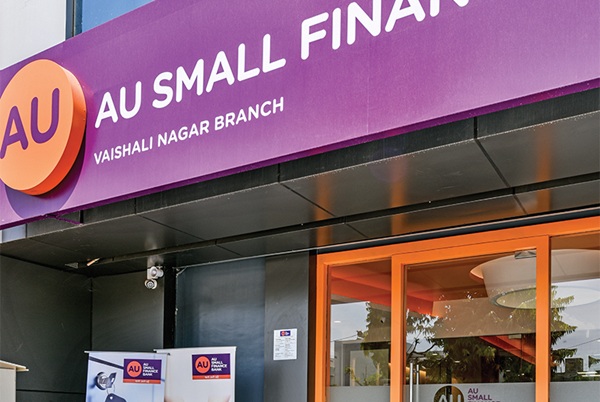.png)

Babuji K is a career central banker with 35 years at RBI in exchange rate management, reserve operations, supervision, and training.
October 6, 2025 at 9:52 AM IST
When the Reserve Bank of India launched its framework for Small Finance Banks in November 2014, it marked a major milestone in India’s financial inclusion journey. The idea drew from the Raghuram Rajan Committee’s recommendations in 2009 and the
Nachiket Mor Committee’s report in early 2014. Acting on these, the RBI issued licensing guidelines for SFBs later that year. The new class of banks was designed to bring credit and banking services to small units, microenterprises, and farmers—segments largely underserved by traditional institutions.
Growth Trajectory
The sector’s expansion has been remarkable. From 0.44% of total banking assets in March 2018, SFBs have grown to 1.18% by March 2024. Their deposit base has risen at a compound annual growth rate of 32% over five years, while advances have grown by
26% annually. The branch network now spans over 21 states.
These numbers reflect more than financial progress—they represent the widening reach of banking to rural and semi-urban India, empowering small borrowers and communities once deemed “unbankable.”
Origins and Purpose
Many SFBs evolved from microfinance organisations with deep experience in community lending, while others transformed from NBFCs specialising in vehicle, MSME, or local financing. A few converted from local area banks, bringing established customer
relationships and operating experience.
This diverse heritage shaped a sector capable of serving individuals and enterprises with strong potential but limited access to formal finance. The customer base includes small manufacturers, food-processing units, transport operators, and other employment-
generating segments that had long remained below the radar of large banks.
New Model
SFBs operate under a framework distinct from other banks. They must direct at least 75% of their Adjusted Net Bank Credit to priority sectors, which is set to be reduced to 60% from 2025–26, and ensure that at least half their loan book comprises loans up to ₹2.5 million.
These requirements have far-reaching implications with respect to their lending activities. While larger banks can balance priority lending with corporate exposure, SFBs must build specialised systems to assess borrowers without credit histories or collateral.
Their credit processes rely on local knowledge and direct relationships, making them both high-touch and high-cost institutions.
Achievements and Struggles
SFBs have delivered impressive growth, with asset bases expanding from a few thousand crores to several tens of thousands of crores. Net interest margins are higher than those of traditional banks, reflecting both higher lending yields and funding costs
linked to limited current and savings account deposits.
Gross non-performing assets range between 2% and 5%, higher than the system average. The COVID-19 pandemic exposed their vulnerability, as small borrowers without collateral buffers struggled to repay. Diversified portfolios offer some protection, but credit-risk assessment remains a persistent challenge.
Cost-to-income ratios also remain elevated due to dense branch networks, technology adoption costs, and staff-intensive loan origination and recovery operations.
Advantages and Threats
As banks, SFBs enjoy privileges unavailable to NBFCs such as access to RBI liquidity windows, participation in payment systems, and lower-cost deposit mobilisation. NABARD refinance facilities provide additional backstops, while deposit insurance coverage up to ₹500,000 per depositor boosts depositor confidence.
Competition, however, is intensifying. NBFCs retain flexibility without banking regulations but cannot accept demand deposits. Larger banks, though burdened by adoption of high-cost technology, have deeper branch networks, stronger brands, and more advanced digital infrastructure. These factors pose credible threats to SFBs market share.
Challenges Ahead
The RBI has highlighted several risks. Sustaining current growth models while expanding into new geographies without commensurate risk infrastructure could undermine stability. Credit quality typically worsens during downturns when vulnerable borrower segments deteriorate.
Attrition, estimated at 40%, threatens service continuity and institutional knowledge. As SFBs grow, technology and cybersecurity risks are rising too. Digital transformation offers scale efficiencies but cannot replace personal interaction, the foundation of their
inclusion model.
The emerging approach is hybrid: technology for transactions, human touchpoints for credit origination and relationship-building.
The Path Forward
Can SFBs deliver inclusion while staying profitable? A decade later, the answer appears to be yes. Institutions have shown that scale, technology, and disciplined underwriting can deliver healthy returns even within priority-sector constraints. Depositor confidence is growing, investors continue to support the leaders, and debt markets have opened to them.
SFBs with strong technology platforms, diversified portfolios, and expanding deposit franchises look sustainable. They represent one of India’s most important financial innovations, bringing formal banking to millions and proving that inclusion can be profitable.
As the sector enters its second decade, its success will depend on balancing growth with risk management, digital efficiency with customer intimacy, and profitability with its inclusion mandate. A holistic assessment of the SFB ecosystem could further strengthen
India’s financial inclusion goals and deepen the reach of formal finance across every
corner of the country.
BasisPoint Briefing — Explainers from seasoned practitioners for readers who want more than the basics.




